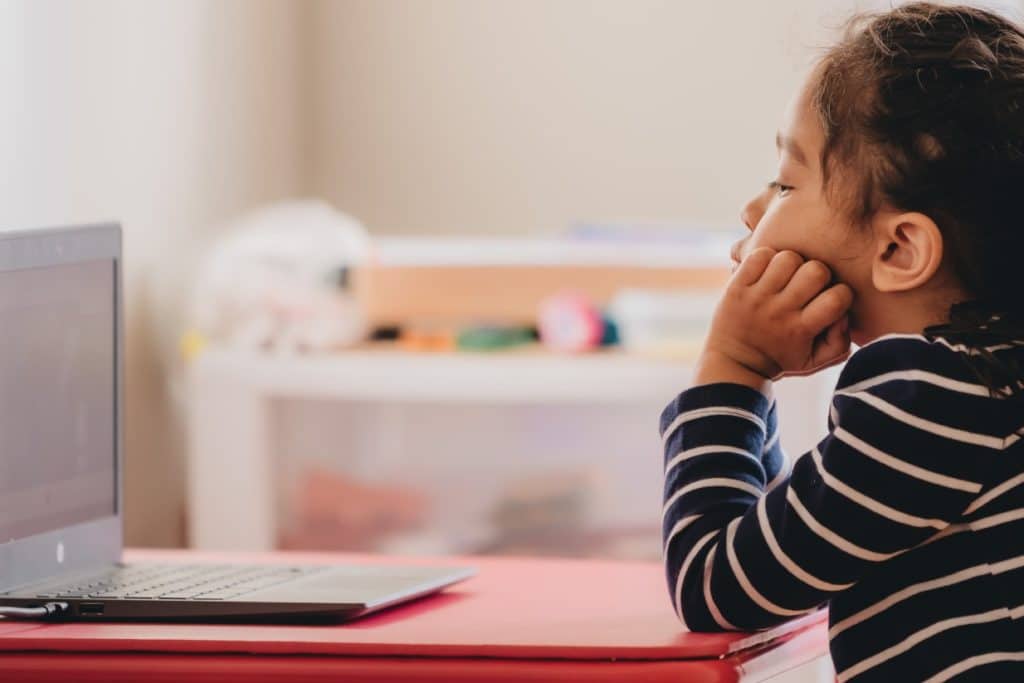


There is no question that for individuals across the world, the COVID-19 pandemic has had an immense impact on essentially all areas of life. During the onset of the pandemic, many businesses and institutions were thrown into crisis mode. One of the most notable changes to many people’s day-to-day life came from the abrupt migration of schools to virtual distance learning. Students from elementary school to university started distance learning from their homes in order to mitigate the spread of the COVID-19 virus.
While initially schools were only meant to continue distance learning for a couple of weeks, many institutions were closed for longer periods. As a result of the setback from the pandemic, many students remained separated from their peers and were expected to manage their own education and studies for the most part.
For the most part, after two years schools have returned to normal conditions welcoming students back on campus. However, the effects of the pandemic on student mental health are still a looming issue. In addition to the aftermath of spending long periods of time distance learning and isolated from peers, many students still experience social isolation – especially if they contract the COVID-19 virus. As the world begins to return to some sense of normalcy, it is essential to continue supporting mental health and provide assistance to those suffering.
The COVID-19 pandemic prompted many changes, most notably isolation from peers and loved ones during a time of uncertainty. During the height of the pandemic, it is easy to see why so many had their mental health impacted as a result of restrictions and the uncertainty of the pandemic itself.
Many already struggling with mental health conditions reported that the pandemic made their mental health even worse. Approximately 20% of college students report that their mental health became significantly worse under the COVID-19 pandemic.1
Some of the reasons associated with the pandemic worsening student mental health with existing conditions include being cut off from their resources for support and loss of the structure of attending school in person. Routines can be particularly helpful with teens and young adults who struggle with depression. Stepping out of the routine of attending school in person and participating in extracurricular activities presented challenges for these students.2 The routine of attending classes in person and receiving support on-campus has a positive impact on mental health.
Aside from attending classes in-person many important social events and milestones were affected by COVID-19 mandates. Many important social events such as dances or graduations were put on hold or canceled altogether during the pandemic. Students look forward to these milestone events all year, if not for many years. The loss of such important milestone events left many students with a feeling of loss and sacrifice.2
Social isolation can be incredibly difficult for all ages – students in their teens and young adulthood are no exception. Good mental health and wellness can be crucial for individuals struggling with conditions such as depression or substance use disorder. During the height of the COVID-19 pandemic, students were removed from their normal social circle and peers and unable to socialize in person for the most part.
In some of the worst circumstances, students had no option other than to return to abusive or dysfunctional living situations and homelife. Re-entering an abusive situation back home during an already stressful time only exacerbated symptoms of anxiety and depression for some students.2
It is important to recognize that while the pandemic seems to have subsided a bit, students may still need to isolate themselves for a period due to testing positive for the COVID-19 virus. Students have been encouraged to adopt innovative ways to spend their time to make up for lack of activity due to social isolation. During social isolation, young people are encouraged to take care of their mental health by taking time out of the day to do one act of self-care.3
There is no denying that social isolation can have a negative impact on mental health regardless of pre-existing mental health conditions. Social isolation has been shown to increase the tendency for depression, anxiety, substance use disorder, and suicidal ideation.5 It has been indicated based on studies of social isolation during previous pandemics that adolescents may have higher PTSD scores if quarantined. The long-term impact of social isolation during the COVID-19 pandemic may not be complexly clear.
However, many studies show that there have been major spikes in depression among students in the last two years.5 As a part of the response to the COVID-19 pandemic, there have been increased measures taken by schools and institutions to counteract the effects of social isolation on students.
The uncertainty surrounding the pandemic gave students new reasons to stress. From the fear of contracting COVID-19 to economic insecurity, the pandemic created a multitude of new stressors for individuals. Social isolation also prohibited students from continuing with employment in some circumstances. Student working in the service industry or an on-campus job may have lost their position due to social isolation guidelines during the early days of the COVID-19 pandemic. Approximately 48% of college students experienced some financial setback due to the pandemic.1 There are techniques that individuals can utilize to manage stress related to COVID-19.
More downtime and time spent at home due to COVID-19 contributed to a rise in social media use. In 2020 social media usage by Americans increased by an average of seven minutes compared to usage in 2019 – the year before the onset of the pandemic.8 In general, individuals appear to be more passive in social media participation – meaning that actively posting stayed the same or slightly decreased, but the time spent scrolling social media increased for most individuals.
While some students use social media as an escape or method to pass the time during periods of social isolation, others may utilize social media to receive information about the outside world while isolating.
So, where exactly does social media usage contribute to problems? Well, some social media users reported extremes in usage. This means that individuals had long periods of extended scrolling, which contributed to feelings of anxiety or even depression, followed by decisions to end their personal social media usage altogether.8 Many individuals decide to detox from social media due to the damage various social media platforms can have on mental health. In recent years, research has made it evident that there is a link between social media usage and mental health. At its core, social media is designed for virality and addiction, making it easy for students to become stuck in the loop of constantly scrolling for hours.9
During a period of social isolation when students may already be vulnerable to intensified symptoms of mental health conditions, negative thoughts and feelings can be compounded further by increased social media use. Many individuals report that social media usage increase feelings of anxiety, depression, and loneliness. In addition, individuals reported that scrolling on social media for longer periods of time negatively impacted self-esteem and contributed to problems with concentration.9
As mentioned previously, some individuals may make the decision to suspend their social media screen time after feeling the negative impact on their mental health. However, the reality is that while a majority of individuals may recognize the toll social media has taken on their mental health, they choose to continue consuming social media content on a regular basis.
There is little doubt that the last two years have taken a toll on the mental health of students across the board. Understandably, the changes and challenges of the COVID-19 pandemic have put a strain on mental health. In some cases, young adults have felt so low that they experience suicidal ideation. According to a CDC report of 5,400 young adults, 25% of those surveyed between the ages of 18 and 25 had contemplated suicide in the last 30 days.10 These numbers are alarming, and there is no easy way, to sum up how students are feeling as a result of the pandemic. However, the psychological impact of the COVID-19 pandemic is apparent.
Many schools and learning institutions are prepared for managing the anticipated fallout from the pandemic. In some cases, schools are increasing access to student mental health resources and outreach. Additionally, schools are including increased access to academic support – in the hopes of combating academic-related stress and anxiety due to lost classroom hours from distance learning. Students who are experiencing changes in personality, changes in behaviors, finding it difficult to connect with others, or a decrease in motivation may be experiencing difficulty in their mental health.10 However, students can access the support they need to not only be successful in their academic careers but also find peace and stabilization in their mental well-being.
Loved ones who are concerned about students in their lives may feel hopeless or unsure of how to approach the subject of help. At the same time, students may be reluctant to seek the support they need to take care of their own mental health. For loved ones, just being available to talk or listen about the daily stressors or feelings students are experiencing as a result of the COVID-19 pandemic can be incredibly helpful. If you are unsure of how to start the conversation with a student here are some tips that can guide the conversation.
Whether you are a student struggling with their mental health or a loved one, it is essential to seek treatment for mental health conditions. Reaching out to professionals about your concerns is a good first step.
Medical professionals will be able to assess the nature of your mental health symptoms and what treatment is appropriate. It is important to remember that resources are always available to help students navigate this challenging time. If you or a loved one is struggling with mental health, you are not alone, and help is available.
1. The Impact of COVID-19 on Student Mental Health. (n.d.). Retrieved from https://www.activeminds.org/studentsurvey/
2. Lee, J. (June 2020). Mental health effects of school closures during COVID-19. The Lancet. Retrieved from https://www.thelancet.com/journals/lanchi/article/PIIS2352-4642(20)30109-7/fulltext
3. Center for Disease Control and Prevention. (n.d.). Helping children cope. Retrieved from https://www.cdc.gov/mentalhealth/stress-coping/help-children-cope/index.html?CDC_AA_refVal=https%3A%2F%2Fwww.cdc.gov%2Fcoronavirus%2F2019-ncov%2Fdaily-life-coping%2Ffor-parents.html
4. Center for Disease Control and Prevention. (n.d.). Students: Care for yourself one small way each day. Retrieved from https://www.cdc.gov/mentalhealth/stress-coping/care-for-yourself/pdfs/Students-Care-for-Yourself.pdf
5. California Department of Education. (n.d.). Social Isolation. Retrieved from https://www.cde.ca.gov/ls/mh/social-isolation.asp
6. State of California Surgeon General. (n.d.). California Surgeon General’s Playbook: Stress relief during COVID-19. Retrieved from https://files.covid19.ca.gov/pdf/wp/california-surgeon-general_stress-busting-playbook–en.pdf
7. Center for Disease Control and Prevention. (n.d.). Support for teens and young adults. Retrieved from https://www.cdc.gov/mentalhealth/stress-coping/teens-young-adults-support/index.html
8. Molla, R. (March 2021). Posting less, posting more, and tired of it all: How the pandemic has changed social media. Retrieved from https://www.vox.com/recode/22295131/social-media-use-pandemic-covid-19-instagram-tiktok
9. Bouygues, H.L. (July 2021). Social media is a public health crisis. Let’s treat it like one. Retrieved from https://www.usnews.com/news/health-news/articles/2021-07-20/social-media-is-a-public-health-crisis
10. Ellis, S. (August 2021). The growing mental health effects of COVID-19 for young adults. Retrieved from https://www.healthcentral.com/article/mental-health-effects-of-covid-19-on-students